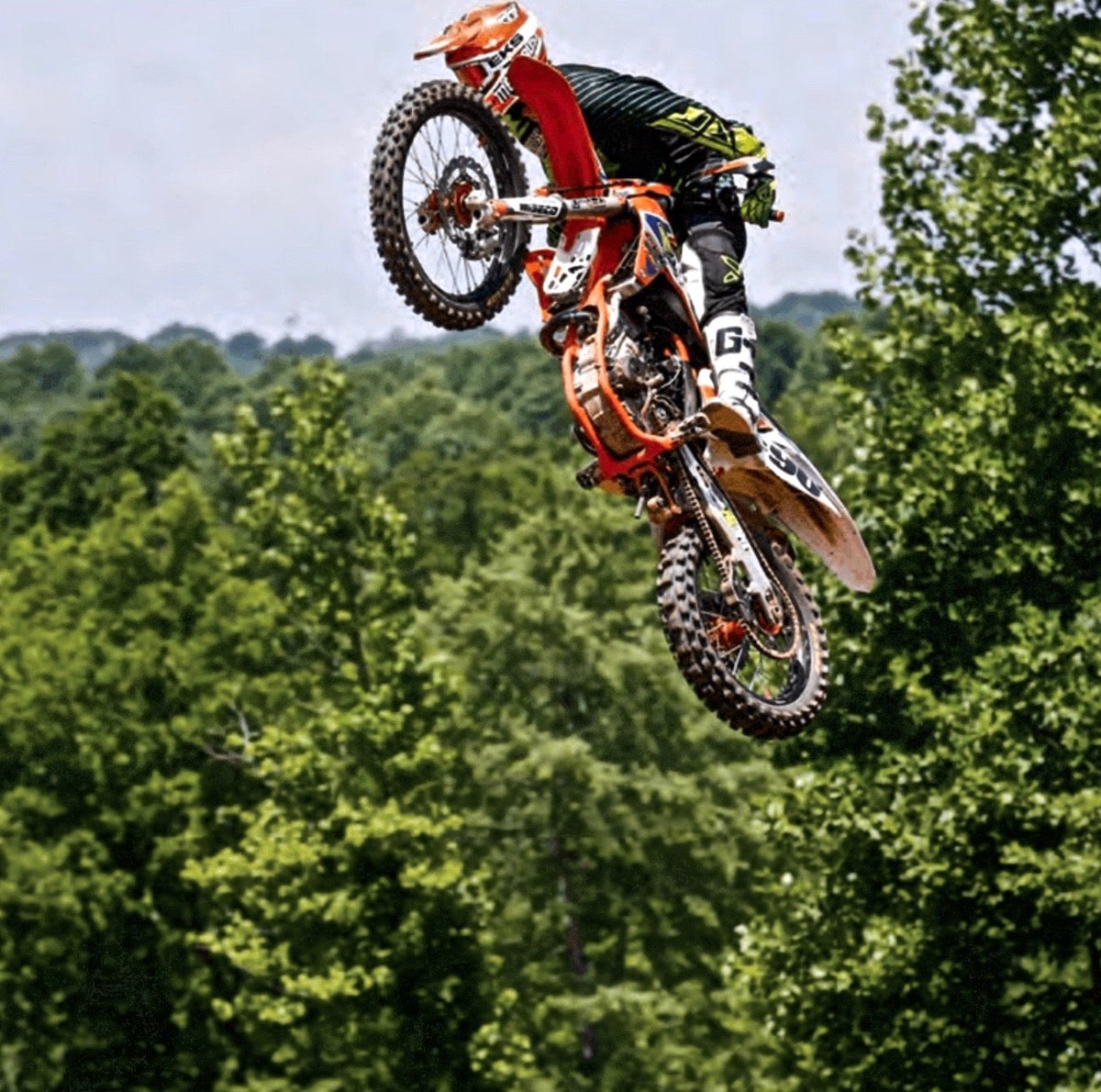ASK THE MXPERTS: ISAAC NEWTON & THE ANGLE OF THE DANGLE
 What goes up, must come down. How is high it goes up and how fast it comes down is left to the rider’s skill level or lack thereof.
What goes up, must come down. How is high it goes up and how fast it comes down is left to the rider’s skill level or lack thereof.
Dear MXperts,
When watching Supercross on TV, I am amazed how the riders can make the front end drop in midair so that they land perfectly on the landing ramp. Since there is nothing to push against, and both the rider and bike are virtually weightless at the top of the arc, how is this achieved?
You can thank Sir Isaac Newton, who was the team manager of the 1703 British Motocross des Nations team. Newton’s famous advice to his riders was, “For every action, there is an equal and opposite reaction.” In the case of changing the upward or downward angle of a bike in flight, Newton suggested that the stored energy of the spinning rear wheel could be harnessed to work on the bike’s frame. For example, touching the brake stops the rear wheel from spinning (that’s the “action” part of Newton’s equation), and this action causes a reaction to the part of the motorcycle attached to the rear wheel (the frame). If the rear wheel stops spinning, the frame of the motorcycle will react in the opposite direction. Thus, slamming the rear brake on in midair will make the front of the bike rotate downward. Remember, the bike and rider are basically weightless, so it only takes a little force to move the bike’s chassis when both wheels aren’t pinned to the ground.
What if the front of the bike is too low? Can Newton’s law save a rider from endoing? Yes. The same rule of physics (for every action there is an equal and opposite reaction) causes the front end to rotate upwards when you twist the throttle in the air. Spinning the rear wheel faster (action) causes the rest of your motorcycle to react by rotating so that the front end rises. The more abrupt the acceleration, the greater the force of the reaction—and the faster your front end will come up. In motocross jargon, this is called a “panic rev.”
The keys to successfully changing the angle of the dangle of your race bike are acceleration and its co-conspirator, deceleration. It isn’t the spinning of the wheel that causes the frame to angle up or down; it’s the rapid change in acceleration or deceleration that brings about the reaction. It is all related to that Newtonian thing about “an equal and opposite reaction.” Equal means that the harder you slam on the brake or the quicker you twist the throttle open, the greater the reaction from the frame. The rate that you are slowing down or speeding up the rear wheel is what powers the equation. Gently tapping the brake will gently lower the front of the bike. Slamming the brake on will drop the nose of the bike instantly.
One word of warning: If the wheel has stopped spinning in the air, tapping the rear brake won’t achieve anything. Conversely, once you hit the rev limiter, your front end will not rotate upward any more, regardless of how long you keep the engine pinned.
There are downsides to taking Isaac Newton’s advice. For example, if you want to backside a jump by tapping the rear brake, you run the risk of killing the engine and augering in. Thus, the worst error a neophyte can make is forgetting to pull in the clutch when tapping the brake. By the same token, clutching the bike while revving the engine to get the front wheel up is counterproductive. With the clutch pulled in, the rear wheel will not spin. Thus all your panic revving will be for naught.
The ability to change the attitude of your bike in flight is valuable and life saving. To master this skill, you must learn to keep rear wheel rpm in the middle range of the gear you are jumping in. Once you dial this in, you will be able to land front wheel down on the back side of tabletops and front wheel up into the face of hard landings. You can use Isaac Newton’s laws of physics to your advantage, but remember they are laws, not suggestions.





Comments are closed.